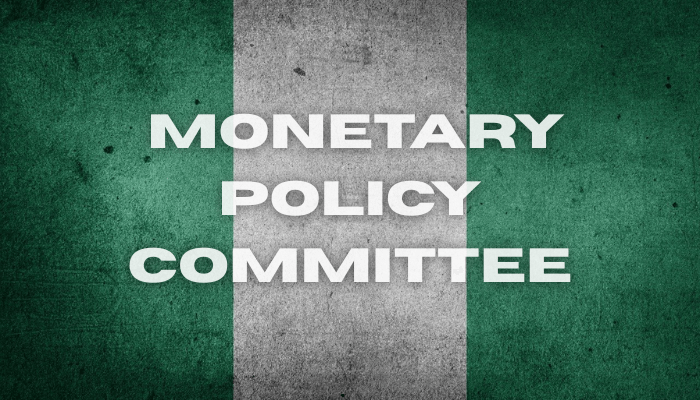OMO-NTB yield convergence signals further interest rate cut ahead
The Monetary Policy Committee (MPC)’s recent 50 basis point cut is now accelerating the convergence between Open Market Operations (OMO) bills and Nigerian Treasury Bills (NTBs), correcting a long-standing artificial disparity created by policy restrictions.
In September, yields across the short-term instruments continued to moderate, with OMO yields falling faster than NTB yields. The spread between one-year tenors of both instruments has compressed to 300 basis points from 650 basis points over the past five months.
Yields on the 364-day OMO and NT-bills have stood at 21.8 percent and 18.7 percent this month, respectively.
“This trend reflects the combined impact of a dovish U.S. Fed, the recent MPR reduction, and the lower country risk premium,” analysts a Cardinalstone said in its latest fixed income report.
Read also: Think-tank backs CBN’s decision to ease monetary policy rate
Policy easing narrows OMO-NTB yield spread
Last month, the MPC cut Nigeria’s benchmark interest rate for the first time in five years by 50 basis points to 27 percent from 27.50 percent, causing an even more downward trend for fixed income yields.
The narrowing spread is welcome news, as it corrects a controversial and artificial market disparity. This divergence was driven by the policy that restricted OMO bills to banks and foreign investors, thereby excluding non-bank financial institutions (NBFIs). This restriction caused the functionally identical OMO bills to yield consistently higher returns than Nigerian Treasury Bills (NTBs).
Wale Smith, a financial analyst, wrote in his ECO215 article that this persistent divergence, where two distinct markets exist for essentially the same security with significantly different pricing, contradicts the principles of orthodox monetary policy.
“It is a lingering legacy of the Godwin Emefiele era, and the time has come to eliminate the multiple interest rate tier regime,” Smith said. “In my view, the bifurcation of Nigeria’s debt market has outlived its usefulness. It distorts market pricing, undermines efficient liquidity management, disadvantages domestic institutional investors, and weakens monetary policy transmission.”
This high-interest policy came at a significant cost to the apex bank, as reflected in the Central Bank of Nigeria’s (CBN) financial report for 2024 (Governor Cardoso’s first report), which showed that cost on OMO instruments had increased by over 100 percent to N4.48 trillion in 2024 from N1.51 trillion the previous year.
“Now that they are doing less issuance and yields are lower, this will decrease the cost of issuing OMO bills to the government,” said Olalolu Boboye, head of research at CardinalStone.
Investor appetite is high despite lower expected returns
Yields on fixed income have seen an even greater drops in yields, with treasury bills dropping by one percent to 18.725 percent at the last primary auctions. The market, which has been pricing in a rate cut for a while, saw yields drop to this level from 29 percent at the start of the year.
“We anticipate further flattening by year-end. Specifically, NTB rates at the primary market auction are expected to settle around 15.0–16.0 percent, while 10-year bond yields should hover between 14.5 –16. percent by year-end, supported by declining inflation and a potential 100bps policy rate cut before year-end,” analysts at Cardinalstone noted.
Nigeria’s sustained moderation in inflation is currently at 20.1 percent and projected to reach 17.0 -18.0 by year-end, supporting appetite for local instruments.
Despite a drop in yields, treasury bills have continued to see investors buying interest, with total subscriptions of over N1.06 trillion compared to N570 billion offered.
Ayodeji Ebo, managing director of Optimus by Afrinvest, said that the lower allotment indicates that the government is not in a hurry to borrow, in line with the CBN’s objective of easing rates and maintaining market stability.
Read also: Is a rate cut in sight? Reading the signals from Nigeria Monetary Policy front
“ This development will likely impact returns on fixed-income investments such as mutual funds and high-yield savings products, which may trend lower. On the flip side, it’s positive for companies issuing commercial papers (CPs), as it provides an opportunity to raise funds at cheaper rates — though investors should remember that 10 percent withholding tax (WHT) applies to CP interest,” Ebo said.
He advised investors to lock into longer-tenored instruments now to secure current yields before rates fall further.
Matilda Adefalujo, fixed income analyst at Meristem, said: “The spread between OMO yields and T-bill yields have narrowed to around two percent in recent times and we can agree on one thing: we are now in a low-yield environment. One of the drivers of this is the faster slowdown in inflation rate.”
Another driver is the robust system liquidity caused by the decision of the MPC to reduce the CRR for commercial banks from 50 percent to 45 percent. For context, industry deposits of about N149.85 trillion (listed banks, Q1:2025) translates to NGN7.49 trillion in addition to system liquidity.
“This lower yield points to lower interest expense on investment securities for banks, including the CBN, when compared to interest expense last year,” she said.

